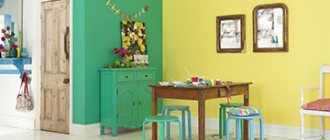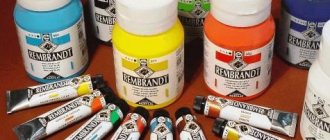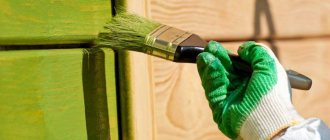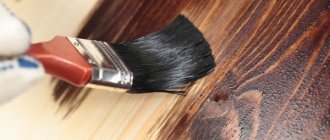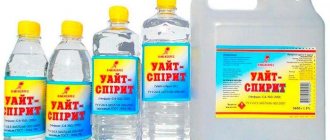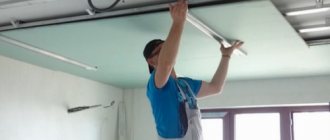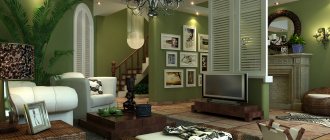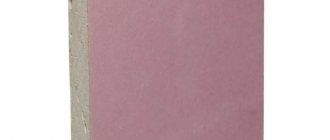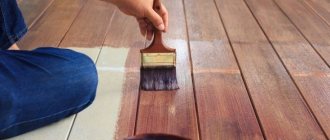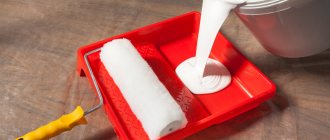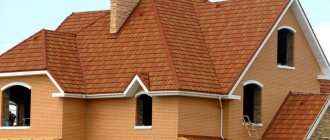Wooden toys are fun for children of all ages. Cubes, mosaics, houses, cars, pyramids, dolls made from natural wood are much more attractive than plastic products. They are durable and environmentally friendly. Paint for children's wooden toys must first of all be of high quality, since children have a habit of putting everything in their mouths, especially babies. The toy should not only be beautiful, but also harmless to the body.
Types of paints
Wooden toys are mainly made from solid linden. Resinous species (pine, larch, etc.) are not suitable for these purposes. Oak and ash are much more expensive. For painting wood, the following types of paints are usually used: oil-based, acrylic, alkyd, and polyurethane paints. Also pay attention to the powder paint. In some cases, after painting, you can detect a sharp chemical smell, which makes you feel dizzy, runny nose, sneezing and lacrimation. Previously, wooden toys for children were not painted at all. They were simply performed in an interesting game version. The beauty of such toys lay in their naturalness. However, children love bright colors. To find out what coloring substance should be used to process the wood of children's equipment, we will conduct a comparative analysis of natural and non-natural paints.
Natural
Toys must be painted taking into account all important parameters. The main list of characteristics of natural paints:
- The composition contains only natural ingredients obtained from plant and fossil sources. Oils, resins, minerals, waxes and pigments are created by nature and intended for safe use.
- The coating forms a single whole with the wooden surface. As a result of treating wood cells with natural oils and resins, a surface that is breathable, water-repellent, and resistant to mechanical damage is obtained.
- They are applied in different ways: brush, spray, dipping, cloth, roller, spatula. Excess is easily removed. Polishing has a special effect, i.e. additional treatment of children's toys with water-based varnish. After applying it, the wooden object acquires special depth and richness, light shine and a noble appearance.
- A wide selection of wood texture options after processing: glossy, matte, various colors.
- The natural coating is completely permeable to water vapor, but impermeable to liquid water, so the paint will not peel off over time.
Note! Natural paints for wooden toys do not contain harmful components that can lead to allergic reactions, poisoning, dizziness and other adverse reactions.
Applying paint with a brush
Unnatural
The use of synthetic coloring compounds is extremely undesirable for children's products. Basic list of characteristics:
- Produced from oil, gas, or coal. After application, the odor has a harmful effect due to its penetrating ability (volatility) and chemical structure that is unnatural for humans. The chemical composition upon contact with the skin has a detrimental effect on the entire body.
- The pores of the wood are closed with a polymer film; neither water vapor nor liquid water penetrates the wood, nor can they be removed without destroying the film.
- The paint is applied using conventional methods. Any inaccuracies can no longer be removed without obvious defects (differences in shade, gloss).
- A modest choice of texture options, as a result of processing the wood takes on a cheap and unnatural look.
- Over time, the top layer peels off, then complete destruction of the wood occurs. During operation, harmful low-molecular substances are released that poison the air in the room.
Peeling off a layer of paint
Wood painting - choice of paint, preparation and application
- The spray gun is optimal if you need to paint a large area: the floor, the facade.
- A roller is useful if you need to paint a medium-sized surface, for example, plywood furniture. For plywood, a tool with a foam coat is preferable. For enamel and water-based paints, you can use a velor roller. A fur tool is suitable for applying decorative plaster to plywood.
- Paint brushes are used to paint small parts, corners, and hard-to-reach areas.
- An airbrush is used to apply artistic inscriptions and patterns to a painted surface.
Enamels
It is recommended to paint the plywood covering the facade with pentaphthalic enamel. Enamel compositions are inexpensive, adhere well to wood, form a thin film, and create a glossy finish.
Which is better: heated floors or radiators?
Warm floorBatteries
Varnishes used as an alternative to paints are based on natural or synthetic resins. They form a transparent or pigmented film that emphasizes the texture of the wood and protects the plywood from external influences.
Epoxy, alkyd, polyurethane and nitro varnish are suitable for painting plywood. The advantages and disadvantages of application are determined by the chemical composition.
Alkyd varnish is used for interior and facade decoration, dries in a couple of days, is highly decorative, and usually gives the surface a brownish tint. Nitrovarnish forms a transparent film, optimal for coating plywood furniture. Polyurethane and epoxy varnishes are wear-resistant and reliably protect the surface.
Painting
Instead of paint, the surface of the plywood can be treated with varnish. In this case, the plywood also needs to be thoroughly cleaned with fine-grained sandpaper. After this, the entire area to be treated should be degreased and cleaned of fine dust and dirt, otherwise all this will be visible under the layer of varnish.
How to treat the surface → Room decoration → How to choose the right paint → Surface treatment technologies → Leveling and finishing the walls → Selecting and applying a primer → Removal from the surface → Stretch ceilings and technologies → Reviews and testimonials
Before painting, it is advisable to cover all nearby furniture and the floor with plastic film. If this is not done, then after painting you will have to clean the floor and furniture. After finishing painting, be sure to check the room thoroughly.
Acrylic
Plywood is rarely painted with oil paint, despite the relatively low cost, since the composition has many disadvantages. Basically, the oil solution is used to paint plywood bases and objects intended for household use.
Expert opinion
Strebizh Viktor Fedorovich, leading construction foreman
Basically, the oil solution is used to paint plywood bases and objects intended for household use. If you want to clarify something, please contact me!
Tool selection
Tools suitable for cutting plywood shapes for the garden are either manual or electric. To work successfully, you need to stock up on a variety of devices:
- Jigsaw. It is better if there is a manual and electric option - in such work they are not always interchangeable.
- Hand drill and drill bits of different sizes.
- A set of files of different thicknesses. It doesn’t hurt to have several files - they periodically become dull and sometimes break.
- To prepare the parts and assemble you will need a hammer, a set of screwdrivers, pliers, an awl, a screwdriver and self-tapping screws.
- Files can be used to polish the cuts and shape them, and fine-grained sandpaper can be used for final sanding.
- To draw, you will need a simple pencil, a stencil and carbon paper.
- Paints. For coloring (if it is planned), stock up on acrylic or oil paints that are resistant to ultraviolet radiation, varnish, and brushes.
- Depending on the size and method of installation of the product in the garden, pegs may be needed. Shovel cuttings from a hardware store are suitable for their role.
How to paint plywood: 5 best compositions and how to apply it yourself correctly
Since ancient times, our ancestors painted various patterns on wooden surfaces. After all, painting on wood looks great both on rustic frames and on kitchen wooden utensils; it is also appropriate in the interior of residential premises.
Expert opinion
Strebizh Viktor Fedorovich, leading construction foreman
In order for the pattern drawn with gouache to hold more firmly, for diluting the paint they use not water, but an aqueous solution of PVA glue in a ratio of 1 1. If you want to clarify something, please contact me!
We prepare everything for work
Before you start creating an artistic masterpiece, you need to prepare in advance everything that may be useful during the work process:
- blanks (any wooden item that you plan to make beautiful and unique);
- soft pencil;
- eraser;
- sandpaper of various grain sizes;
- paper sheets (for those who work from sketches);
- a set of brushes of various thicknesses;
- palette;
- templates (for those who cannot draw);
- paint;
- primer;
- transparent varnish (it is advisable to coat the finished pattern with varnish so that it is less damaged);
- container for liquids (for water or solvent, depending on the colorant).
The wood primer is selected according to the type of paint, but the choice of paint must be taken seriously.
Expert opinion
Strebizh Viktor Fedorovich, leading construction foreman
If the slightest peeling of the veneer is observed on the end parts where the veneer layers are visible, you should refuse such a purchase, despite the tempting price. If you want to clarify something, please contact me!
Bleaching and staining
To lighten wood of any species, bleaches are used. Usually oxalic acid is used, as well as household chlorinated bleaches. It is necessary to work with them in rubber gloves, avoid contact with the skin of your hands. For work, brushes made of synthetic material are used.
Buy stain for wood and wood at an attractive price
The stain is produced on water, alcohol and oil bases. The product is applied only to a surface that has been thoroughly cleaned of old finishes. Work with stain according to the instructions; it is better to do a small stain on a small piece of wood before starting the process.
The purpose of painting wood
Before deciding what composition to coat a wooden surface with, the final goal that they are trying to achieve with this operation is determined. This coloring of a wooden product has several ultimately interrelated results:
- Get a protective coating that extends the life of a wooden part or structure.
- Improve the aesthetic perception of wooden surfaces by emphasizing their internal structural pattern.
- Give an item made with wooden parts an updated appearance.
- Protect the joinery product from the aggression of external environmental influences.
Only after deciding on the purpose of the painting work can you choose how to paint the wood with your own hands.
Painting plywood - methods of preparing the base and choosing the material
- Draw it yourself. You simply draw the design you like on a piece of paper, and then cut it out according to the silhouette and transfer it using carbon paper to a sheet of plywood. People with a steady hand and a keen eye draw a figure with a pencil directly on the plywood.
Putty
The next stage is surface repair. Before painting, it is necessary to eliminate all existing defects and eliminate them using construction putty. It is applied to a wooden base in a thin layer with a metal spatula. Putty is used to cover the heads of nails, metal staples, cracks and chips, and joining seams. Excess putty is sanded off with sandpaper.
It is necessary in order to reduce the absorbency of plywood. Drying oil or other solutions that can fill pores are usually used as a primer. The primer extends the service life of the product, protects it from possible damage, disinfects the wood, and prevents fungi and mold from settling on it.
The primer ensures reliable adhesion of the paint and the top layer of plywood, which is why the topcoat lasts much longer. The primer can be applied with a spray gun or roller, as convenient. Choosing the first element allows you to perform the operation much faster, choosing the second helps create a denser soil layer.
Expert opinion
Strebizh Viktor Fedorovich, leading construction foreman
We hope everyone has learned how and with what to treat plywood for moisture resistance, how to give the technical material special decorative properties and increase the service life of the product. If you want to clarify something, please contact me!
